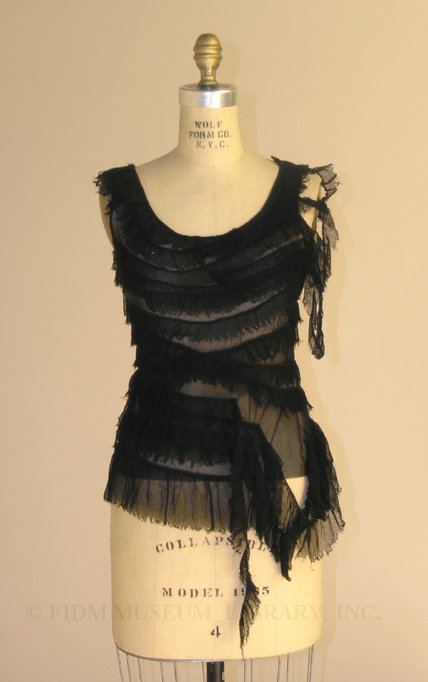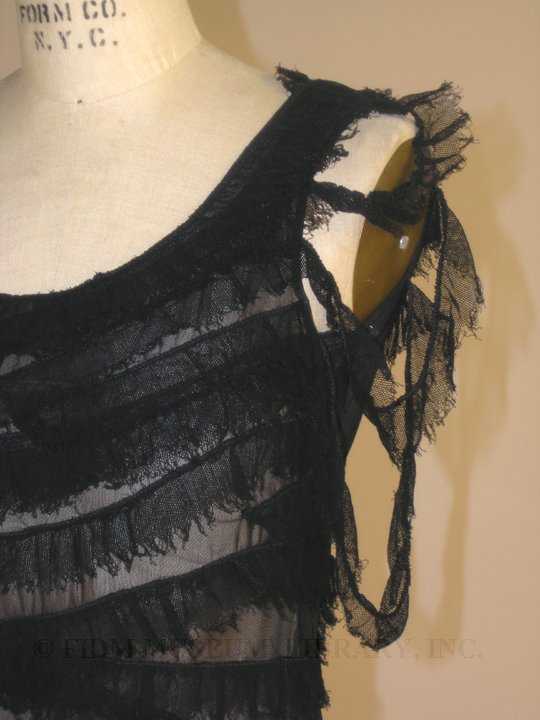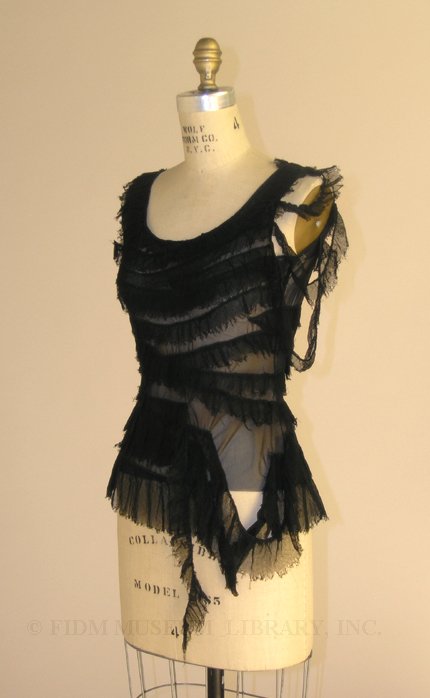Deconstruction in fashion
These days, it's fairly common to see garments incorporating raw edges, exposed seams and distressed textiles. Giving garments an unfinished appearance and hinting at the process of design and creation, this style is usually called deconstructionism. Initially intended to challenge widely held perceptions that garments must be flawlessly finished and enhance accepted definitions of beauty, these design elements have become so widely utilized that they've nearly lost the ability to shock and discomfort. Only extreme deconstruction can stop us in our tracks, such as the shredded and torn disarray of this Jean Paul Gaultier tank top. Though it appears to have been severely mistreated, this mesh tank was designed and manufactured to look tattered and torn.
Dear readers, does this deconstructed tank top inspire a strong reaction? Though it might not be as obviously appealing as our Madame Olympe or this 1930s evening coat, deconstructed garments play an equally important role in fashion history.
In a nutshell, deconstructionism is a philosophy based on uncovering contradictory meaning and therefore destabilizing the idea of universal truth. It is widely associated with the philosopher Jacques Derrida, who first proposed it as a way of thinking in the late 1960s. Though originating in the rarefied world of pure philosophy, ideals of deconstruction were soon applied to other areas of cultural practice, including architecture, music and fashion. In terms of fashion, this meant that some began to question long-standing perceptions of how clothing is constructed and its standing in relation to concepts of beauty. Though there have always been outliers who challenge perception, deconstruction allowed for a multiplicity of viewpoints on personal appearance and fashion to gain equal importance. Ultimately, it has resulted in the diversity of current styles that we see on the streets today.
Punk style, with its emphasis on worn and altered garments accompanied by a confrontational attitude, is probably the first example of deconstruction in fashion. British designer Vivienne Westwood began designing in this context and her work remains challenging to this day. During the 1980s, deconstructed garments appeared on Paris runways in the work of Japanese designers such as Yohji Yamamoto and Rei Kawakubo, who presented black and gray garments created of distressed and worn textiles that enveloped rather than accentuated the body. These garments were called obscure, complicated and intellectual, but were also widely influential. From these controversial origins, elements of deconstruction have become a widely accepted part of the fashion vocabulary, appearing on both mass-market T-shirts and fashion runways.



